Snug Fit Pajamas: A Guide to Flame Retardants and the Children’s Sleepwear Regulations
If you’ve purchased baby or kids PJs recently, perhaps you noticed a large yellow tag that said:
“For child’s safety, garments should fit snugly. These garments are not flame resistant. Loose fitting garments are more likely to catch fire.”
As a parent, this could definitely mess with your head and leave you wondering if you’re sending your little angel into a scary fire death trap (don’t worry, you’re not). Although the large tag is there for good reason, it can certainly be alarming if you don’t have an understanding of the historical and legal context behind it.
But don’t worry, we’ve got ya covered. Read on for everything you need to know about how snug fit pajamas and the children’s sleepwear regulations are keeping your little one(s) safe.
Article Contents:
- CPSC and the Children’s Sleepwear Regulations
- History of Flame Resistant Sleepwear
- The Truth About Flame Retardants
- Introduction of Snug Fit Pajamas
- Sleepwear Regulations for Infants
- Buying Safe Pajamas
- More From the CPSC
- Our Commitment To Safety
- Summary
CPSC and the Children's Sleepwear Standards
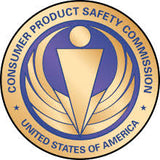 Children’s sleepwear is highly regulated by the U.S. Consumer Product Safety Commission. The CPSC sets national flammability safety standards for children's sleepwear to protect kids from burn injuries that could occur if they were to come in contact with small ignition sources like a candle, lighter or space heater (yes, this happens).
Children’s sleepwear is highly regulated by the U.S. Consumer Product Safety Commission. The CPSC sets national flammability safety standards for children's sleepwear to protect kids from burn injuries that could occur if they were to come in contact with small ignition sources like a candle, lighter or space heater (yes, this happens).
Under today’s federal safety guidelines, Children’s sleepwear fabric and sleep garments sold in sizes larger than 9 months must be either:
- Flame resistant, and pass specific flammability testing OR
- They must be tight fitting pajamas, which is defined by the CPSC and involves very specific clothing measurements.

The History of Flame Resistant Sleepwear
So what in the world is the deal with all of this flame retardant talk?! Glad you asked. Here’s the story…
In the 1940s, sweaters and children’s cowboy chaps (yes, cowboy chaps) were made out of rayon fabric that ignited easily and flash burned, and as a result, children died. Obviously there was an uproar over the tragic deaths that occurred, so the government passed the Flammable Fabrics Act in 1953. The act was put in place to regulate the manufacture of highly flammable clothing, such as brushed rayon sweaters, children's cowboy chaps, and you guessed it - children’s sleepwear.
The act required children’s pajamas to be flame retardant. Remember - at this point in time, children’s PJs were designed to be more loose fitting. Theoretically, if a child were to accidentally come into contact with a small ignition source, the air between the child’s skin and the garment would feed the fire, causing the garment to ignite.
Therefore, the CPSC required that all children’s sleepwear for children over 9 months of age be flame retardant, which can be achieved in one of two ways:
- They needed to be made of an inherently flame resistant, uncomfortable material, such as Polyester OR
- They needed to be treated with toxic, flame retardant chemicals.
The Truth About Flame Retardants
Many manufacturers opted for #2 - use flame retardants chemicals to make the PJs flame resistant. For years, chemicals were added to garments to make flame retardant fabrics for children’s clothing. The use (or non-use) of flame retardants is a BIG DEAL because they're not exactly great for kids (or anyone, for that matter).
In the 1970s, Arlene Blum, a researcher at the University of California, Berkeley published papers in Science magazine calling for the ban of two flame retardant chemicals commonly used in kids’ sleepwear: brominated tris and chlorinated tris. According to Arlene and her researchers, both of these flame retardants caused mutations in DNA and were absorbed through the skin into children’s bodies. When it was found to be a potent carcinogen in 1977, tris was banned from being used in children’s sleepwear. Tris is still widely used, especially in furniture (in fact, it’s the second most commonly used fire retardant in furniture), but no longer in kids’ pajamas, thankfully.
“Safer” flame-retardants were then introduced, but it didn’t take long for people to learn that these “safer” alternatives were still potentially dangerous to kids - think: increased hyperactivity and lowered IQ. Despite the risks and concerns of flame retardants being used in kids’ sleepwear, the laws remained in place and children’s pajamas were required to be “flame resistant” until the mid-90s.
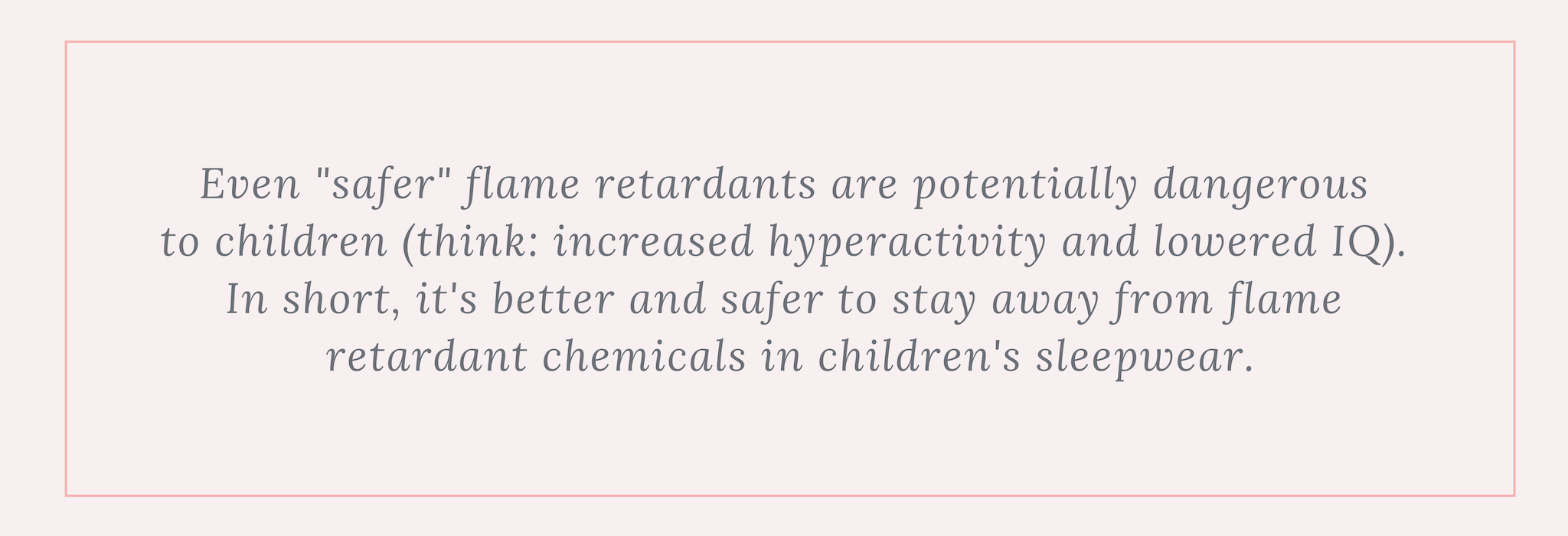
The Introduction of Snug Fit Pajamas
In 1996, the Consumer Product Safety Commission introduced a loophole into the children’s sleepwear regulations: Children’s sleepwear DOES NOT have to be fire resistant as long as they are snug fitting pajamas! Yes, finally kids pajamas without flame retardant!
But Why? Because of their fit, PJs that meet the tight fitting size requirements DO NOT need to be treated with flame retardants because they do not ignite easily if a child accidentally comes into contact with an open flame. Moreover, they are made to fit closely against a child’s body and of course, fire needs oxygen to burn. So Snug fit pajamas are less flammable because they minimize the amount of air between the child’s skin and the garment, squashing the ignition source.
In short, it's better and safer to stay away from flame retardant chemicals so the tight fitting pajamas with the WEAR SNUG FITTING warning are actually the ones you want.
Sleepwear Regulations for Infants
Luckily, flame retardant baby pajamas are not hard to come by. Because babies under the age of 9 months are insufficiently mobile, it's unlikely that they'll find themselves face-to-face with an open flame. Not to mention, they're more concerned with food and sleep than playing Jack-Be-Nimble. Because of this, sleepwear designed for infants younger than 9 months is NOT required to meet the same rigorous standards. These sleepwear garments can be either loose fitting (like a baby sleeper gown) or tight fitting like our sleep sets. Regardless of your fave style, baby pajamas without flame retardant are the norm.
However, there are still important regulations in place to ensure the safety of infants in PJs. For one, the garments must meet certain length requirements. If it's a one piece garment (like a gown or onesie) the length CANNOT exceed 25 3/4" when laying in a relaxed position. If it's a two piece set, neither piece can be longer than 15 3/4".
Unfortunately that means many of those cute knotted baby gowns you see on the market don't actually comply with the regulations because they're quite a bit longer than 25 3/4". Lookin' at you, knotted gown.
Don't worry, we have a better, safer infant gown that DOES adhere to the guidelines! For more on infant sleepwear regulations, check out Infant Sleepwear & The CPSC Standards.

Buying Safe PJs
One thing you'll surely notice is the large yellow hang tag. It's a CPSC requirement that all tight fitting pajamas intended for children over 9 months bear this yellow tag (there are even requirements for the size of the tag and the font!). It's simply there to make sure that consumers realize that the PJs are NOT treated with flame retardants and therefore, should be worn close to the child’s body.
The garment must also bear a permanently affixed neck label that states WEAR SNUG FITTING. NOT FLAME RESISTANT set apart from other text by a lined border. For loose fitting pajamas intended for wear by children under 9 months of age, like our baby sleeper gown, these labels are not necessary.


There are a few other thing you should be keeping an eye out for while shopping for kids PJs: Check out 5 Things To Look For When Buying Children's Sleepwear for more.
In addition to the flammability requirements, the Consumer Product Safety Act (CPSA) requires that all children's clothing be tested at a third party laboratory to ensure that they meet the requirements for lead content/surface coatings (think: screen printing, painted snaps or zipper pulls) and phthalates (a group of chemicals often used as a plasticizer).
Children's sleepwear brands must maintain (and present, when asked) third party issued children’s product certificates (CPCs) stating compliance with the sleepwear flammability standards as well as the children's clothing standards. If you're ever unsure, just request the CPCs. If the company's compliant, they'll have no problem getting them for you! We have ours - If you'd like to see them, visit our CPC request form!
More from the CPSC
The CPSC recommends that you do NOT put children to sleep in T-shirts, sweats, or other oversized, loose fitting cotton or cotton blend garments. These garments can catch fire easily and are associated with burn injuries to children.
Our Commitment to Safety
In 2017, over 50,000 baby and children's sleepwear garments (think pajamas, robes, and rompers) were recalled in the US for failing to comply with federal flammability standards. At Westyn Baby, our primary concern is the safety of the children wearing our PJs. We're committed to adhering to all federally-mandated children's sleepwear guidelines. We're proud to say that our PJs have been rigorously tested at a third party laboratory to ensure compliance with all children's sleepwear regulations, including those determined by the US Consumer Product Safety Commission AND Health Canada.
Summary
Yeah, I know the children’s sleepwear regulations can be confusing. Here’s the short of it:
- The CPSC sets national flammability safety standards for children's sleepwear to protect children from burn injuries that could occur if they were to come in contact with small ignition sources.
- Traditionally, children’s sleepwear was made of inherently flame resistant, uncomfortable material (think: itchy Polyester) OR it was treated with flame retardant chemicals to make it resistant to fire.
- Over time, we learned that flame retardant chemicals are linked to myriad health concerns for children.
- Snug fit pajamas were introduced as an alternative to loose fitting sleepwear.
- Snug fit sleepwear DOES NOT require the use of toxic, flame retardant chemicals they’re made to fit closely against a child’s body, minimizing the air that would be necessary to feed a fire.
- Flame retardant baby clothing (for children under 9 months) is unnecessary because most children of that age are insufficiently mobile and will not come in contact with an open flame. So baby sleepwear can be either loose fitting (like our baby sleep gown) or tight fitting (like our two piece sleep sets).
- All children's sleepwear companies must maintain (and present, when asked) third-party issued Children's Product Certificates (CPCs) that ensure compliance with all of the sleepwear guidelines.
So there you have it. The full background on the CPSC children’s sleepwear and flammability standards. In our opinion, it’s best to avoid loose fitting toddler pajamas since they’re made of uncomfortable materials and then doused with flame retardant chemicals. If buying sleepwear for children over the age of 9 months, tight fitting pajamas are the safest option.


Sources:
https://www.babylist.com/hello-baby/flame-retardant-baby-clothes
https://www.nytimes.com/2006/11/19/opinion/19blum.html
https://www.cpsc.gov/Regulations-Laws--Standards/Statutes/Flammable-Fabrics-Act/
http://www.sccma-mcms.org/Portals/19/assets/docs/Brominated%20Flame%20Retardant.pdf
Leave a comment
Comments will be approved before showing up.
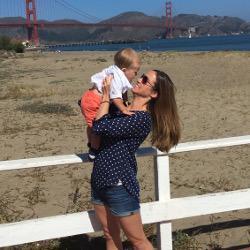

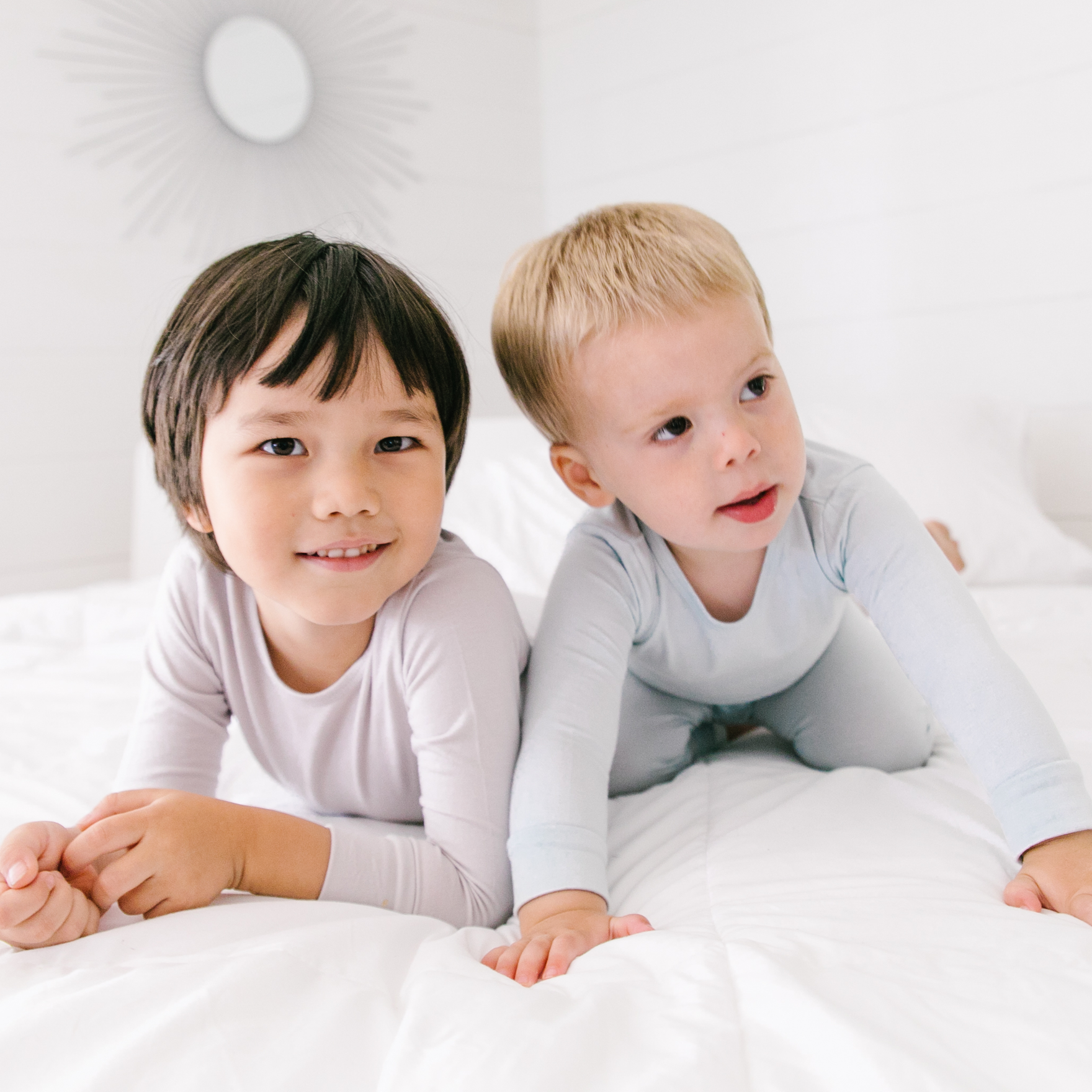
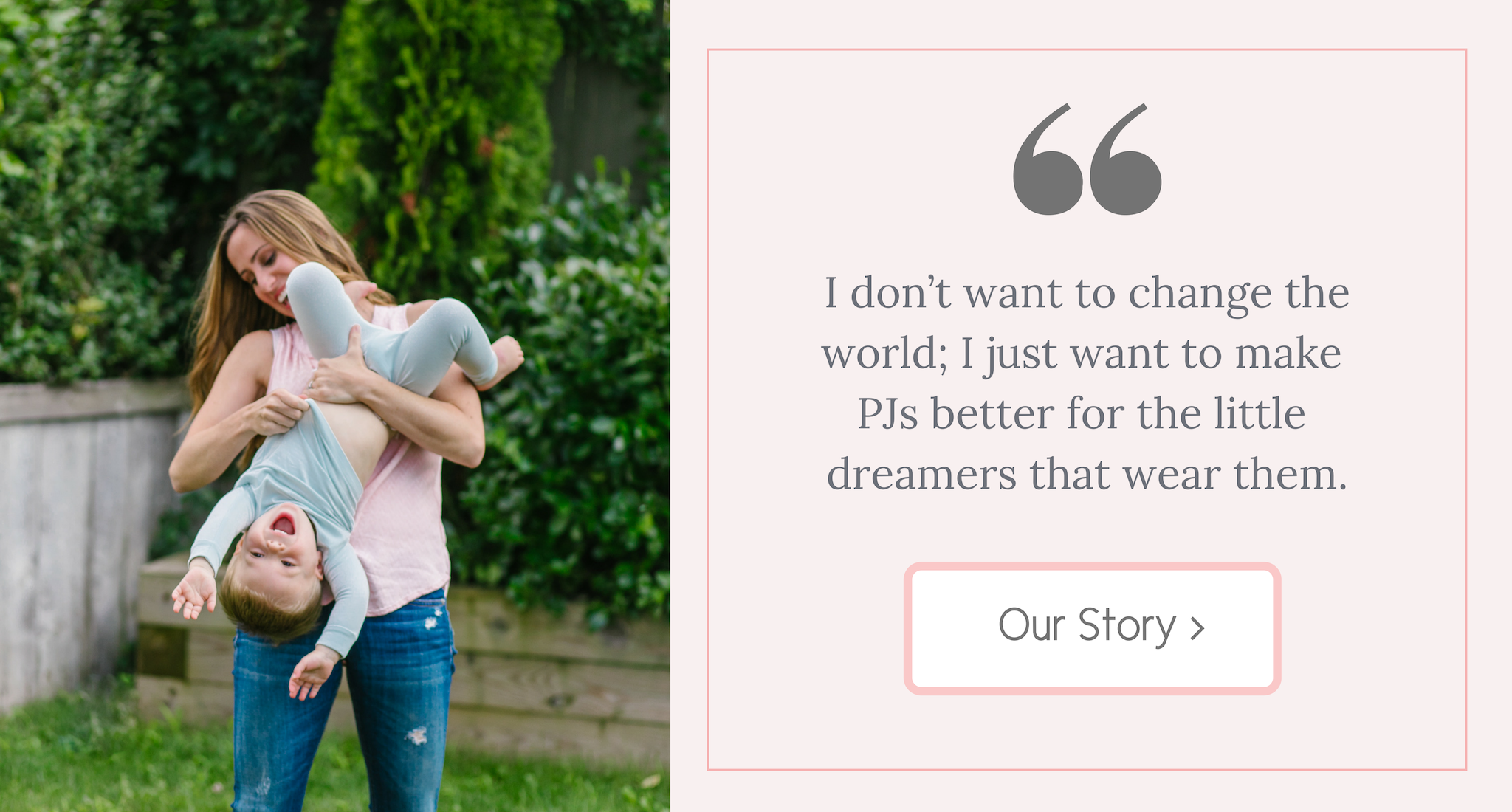
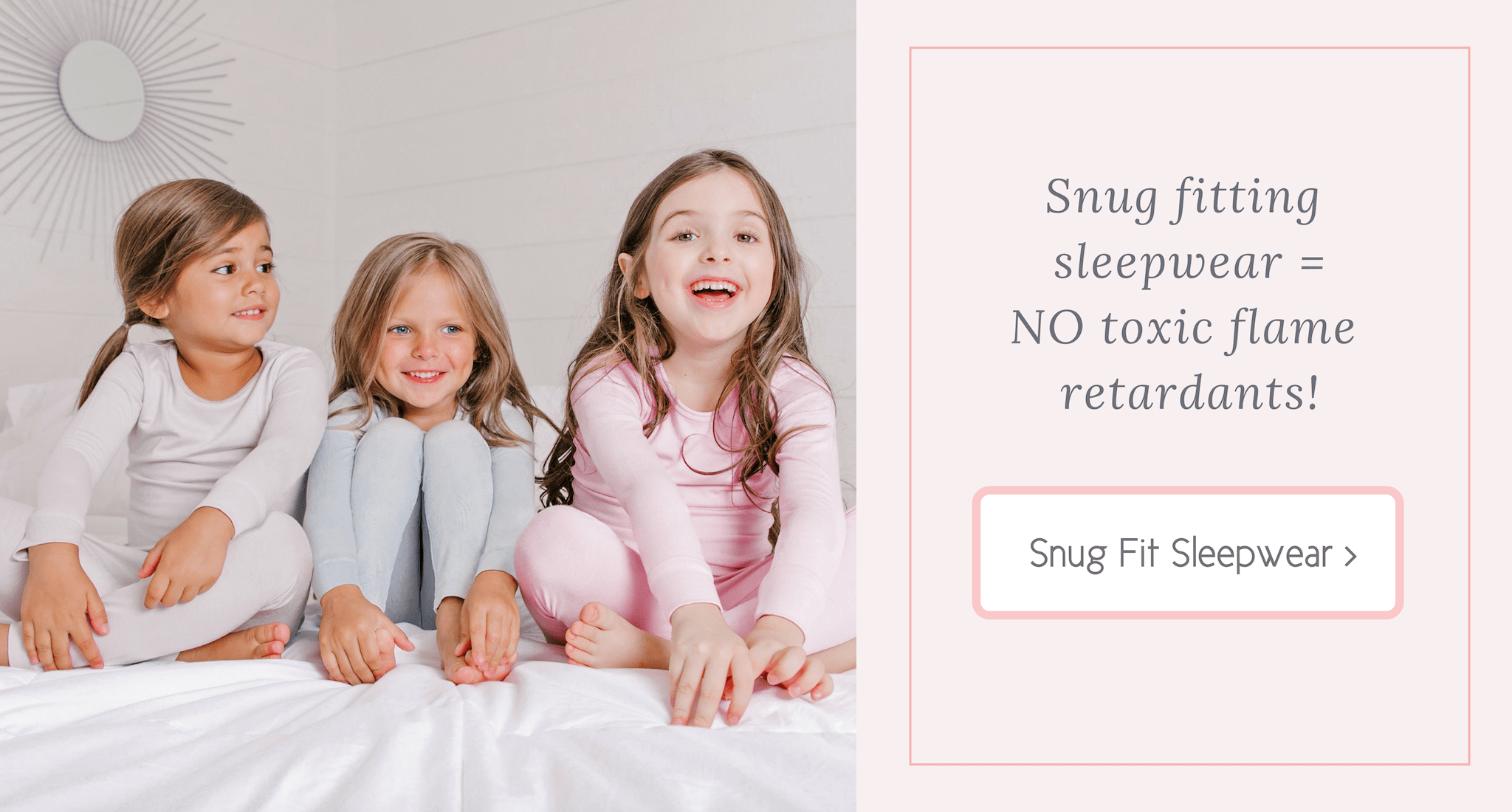
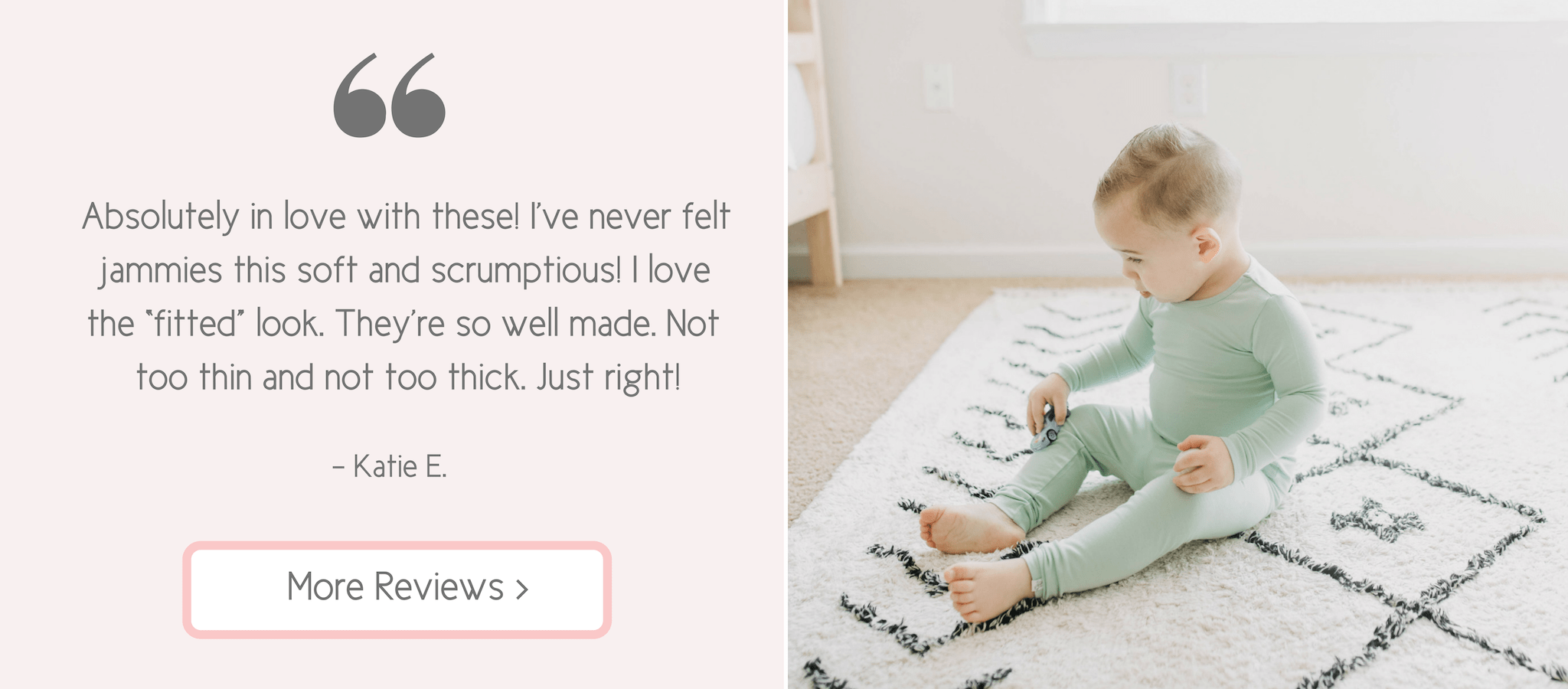
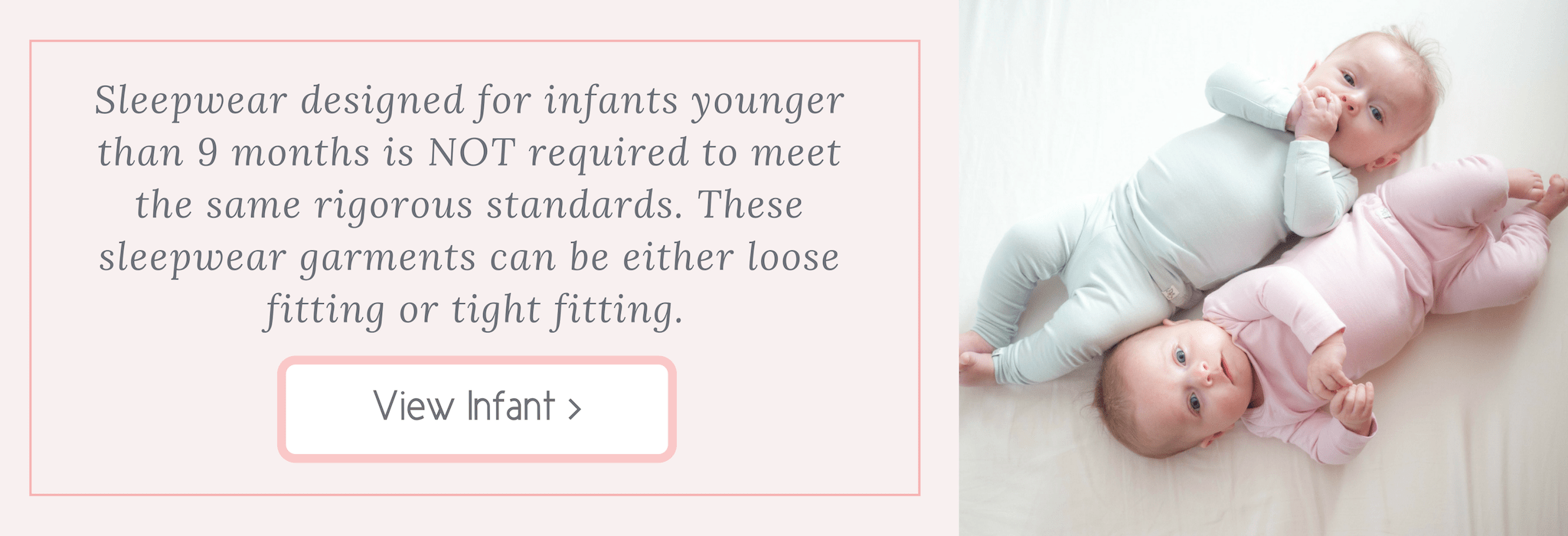

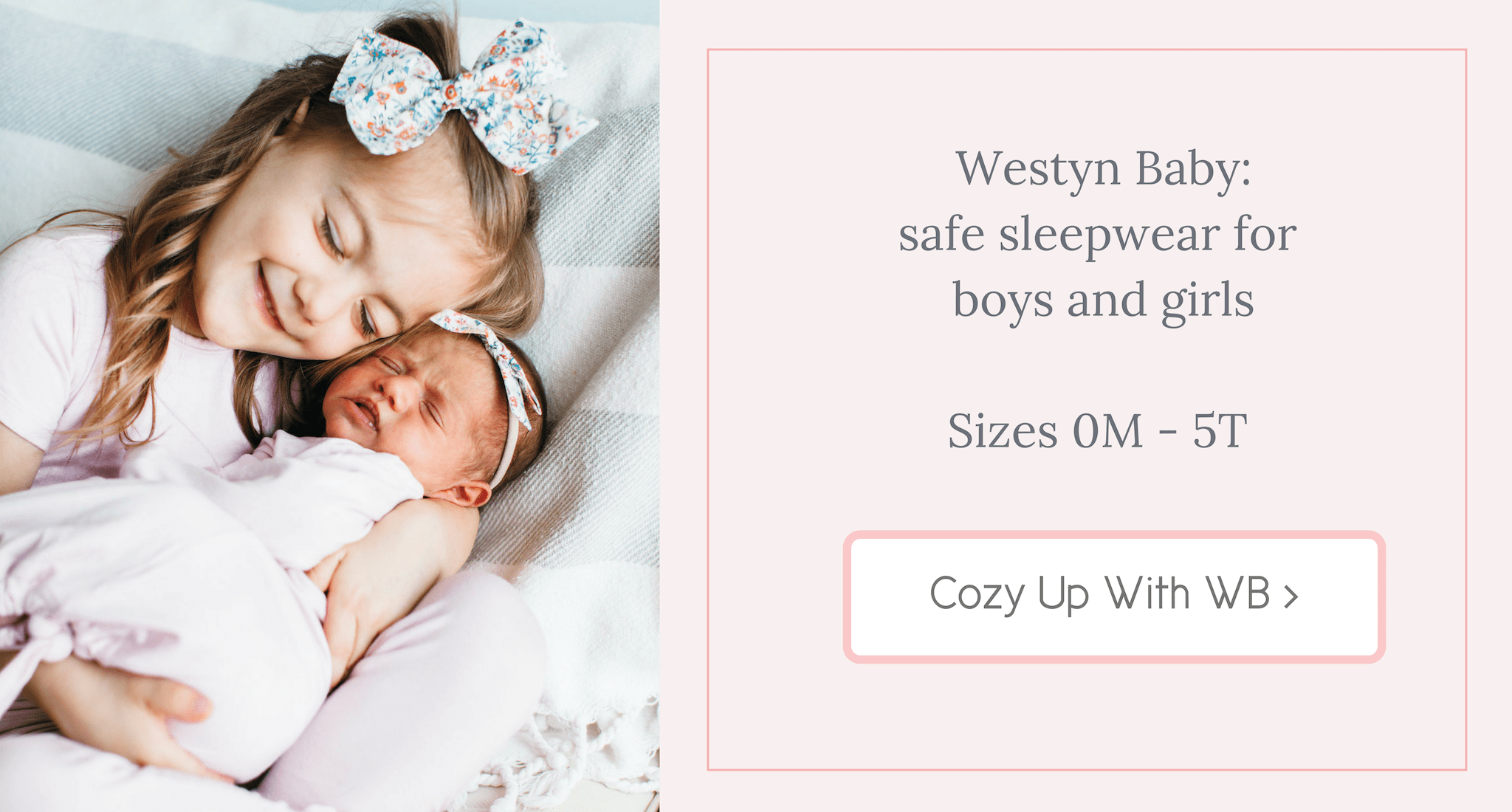
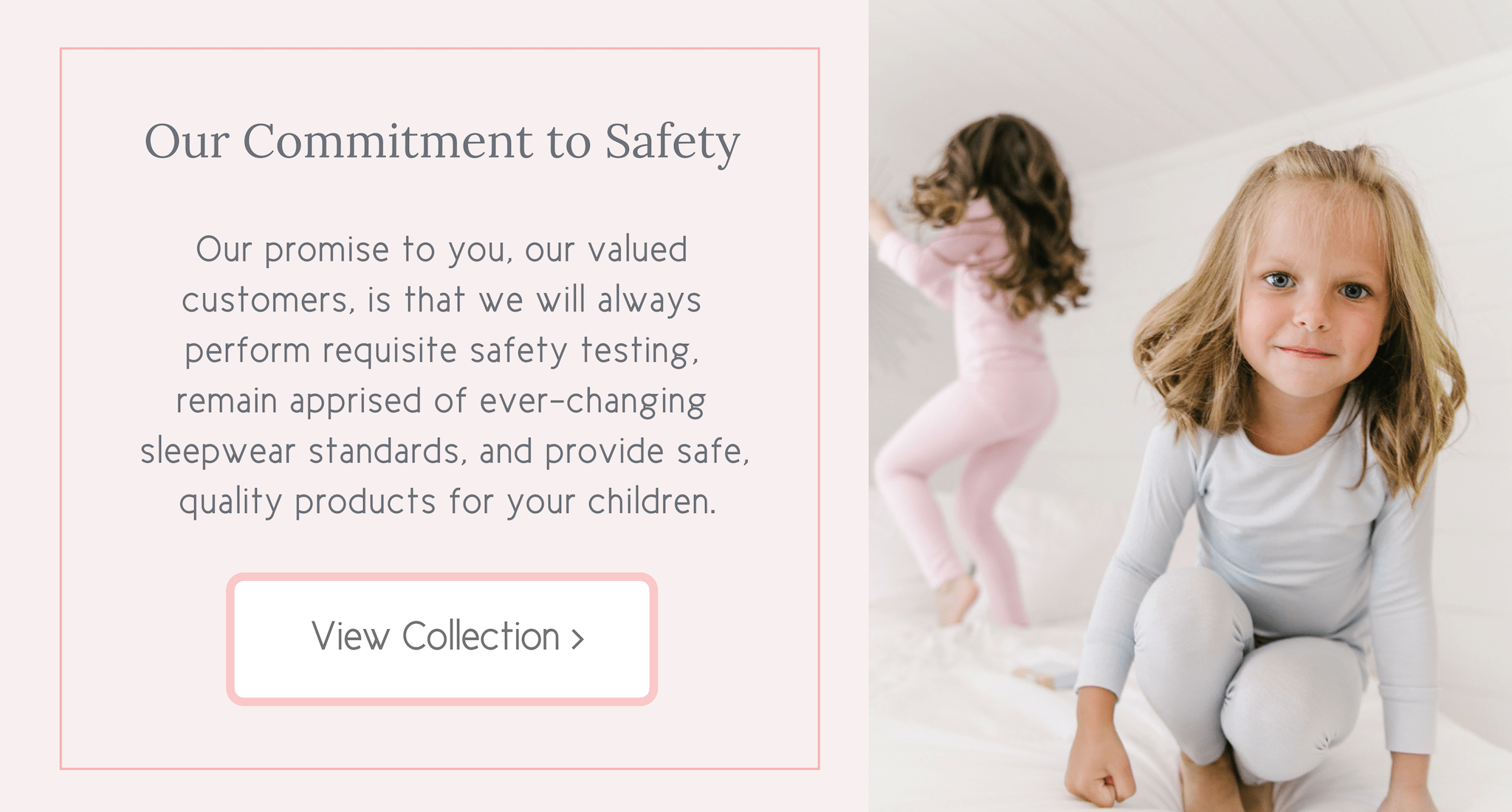


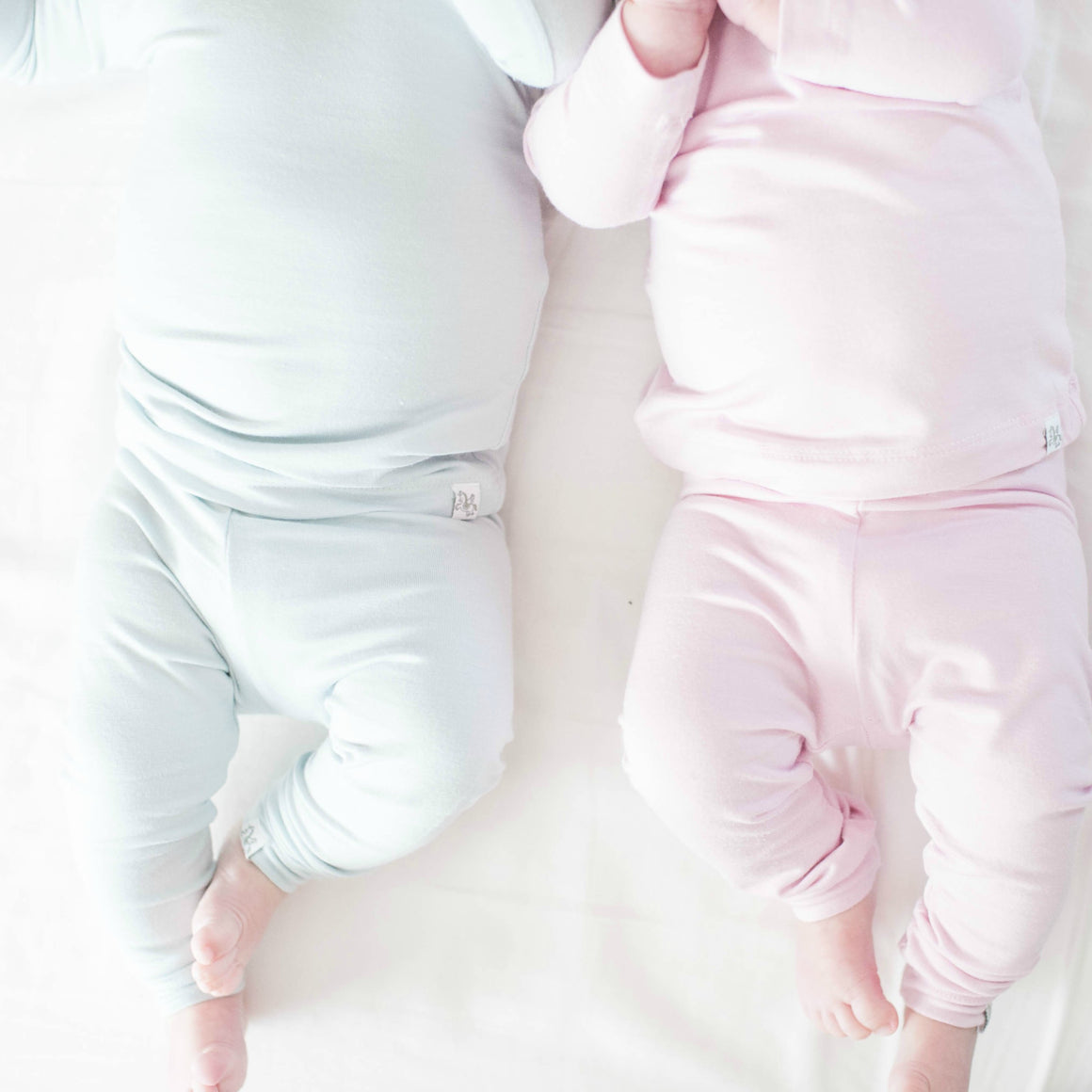
About The Author
Tara Saltzburg founded Westyn Baby when her son was an infant battling severe eczema. She was always on the lookout for products that would minimize the irritation and ease his discomfort, but safe, non-irritating pajamas proved difficult to find. Tara started Westyn Baby in 2016 with a mission to create better, safer sleepwear for kids - sleepwear that's exceptionally soft, flame-retardant free, sensitivity-friendly, and durable. Read more about WB sleepwear.
Tara was born and raised at the NJ shore and attended Penn State University, where she played soccer and discovered her love of mountain life. She is a mom of one boy and hopes to eventually have enough kids to form some sort of athletic team. She and her family currently reside in Central Pennsylvania and spend the summers in Stone Harbor, NJ.